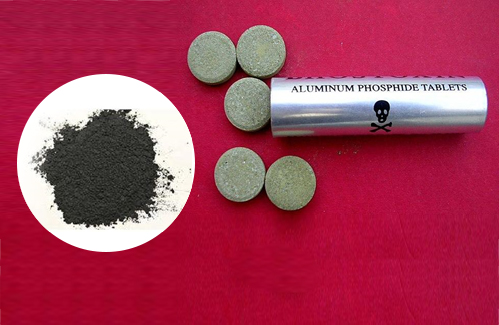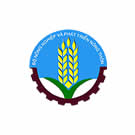- Folder Technical News
- Views 561
- Last Updated 18/12/2024
After being processed, fresh food's composition and structure will change compared to when it was in its natural state, along with the formation of harmful substances that can cause cancer.
Contaminants produced during food processing are substances that do not exist in raw food but only appear in food/ ingredients through chemical changes after thermal or fermentation.
1. The thermal process
Temperature is used in most food processing methods today, from low temperatures such as drying and drying; medium temperatures such as boiling, and stewing; to high temperatures such as frying, frying, and grilling.
The Maillard reaction, named after French chemist Louis Camille Maillard, is a chemical reaction between amino acids and reducing sugars that gives foods brown color and distinctive flavor. Foods made from high protein sources, fried foods, cakes, toasted marshmallows, and many other foods undergo this reaction [1].
Table 1. Contaminants produced through the thermal process
|
Contaminants |
Examples of risky foods |
|
Polycyclic aromatic hydrocarbons (PAHs) |
Grilled meat/fish, fried foods at high temperatures |
|
Heterocyclic amines (HCAs) |
Red meat/poultry/grilled or fried, fried fish at high temperatures |
|
Nitrosamines |
Salted meats, bacon, sausages |
|
Acrylamide |
French fries, toast, crisps |
|
Trans fats |
Cakes, meat, and fish, baked/fried at high temperatures |
|
Furan and alkyl furan |
Roasted/dried coffee, nuts |
|
3-MCPD and derivatives |
Soy sauce, soy sauce, processed milk |
* Chronic toxicity
- Polycyclic aromatic hydrocarbons (PAHs): Associated with lung, stomach, and colon cancers.
- Heterocyclic amines (HCAs): Associated with colon, breast, and prostate cancers.
- Nitrosamines: Linked to liver, stomach, and esophageal cancers.
- Acrylamide: Associated with kidney, ovary, and thyroid cancers.
- Trans fats: contribute to hyperlipidemia, and visceral fats, contribute to the onset of cardiovascular diseases and strokes.
- Furan and alkyl furan: Involved in toxicity to the nervous system and can cause lung and kidney cancer.
- 3-MCPD and derivatives: Associated with central brain toxicity and can cause kidney and prostate cancer.

Figure 1. Thermal process foods
* How to identify the risk:
- Scorched products: Black or scorched products (cakes, nuts, coffee, meat, fish) often contain a lot of polycyclic aromatic hydrocarbons, furans, and transfats.
- Deep-fried foods: French fries, toast that are dark brown or burnt may contain acrylamide.
- Salted and smoked meat: Meat that is bright red or has smoked skin often contains nitrosamines, and polycyclic aromatic hydrocarbons.
- Frying/frying/refining grease is likely to contain transfats, 3-MCPD, and derivatives.
2. The fermentation process
Fermentation is a metabolic process that produces chemical changes in organic substances through the action of enzymes. Fermentation is used in food processing to produce a variety of products such as bread, cheese, yogurt, pickles, and alcoholic beverages.
Table 2. Contaminants produced through fermentation
|
Contaminants |
Examples of risky foods |
|
Ethyl carbamate (Urethane) |
Fermented drinks, wine, beer, sake, soy sauce |
|
Nitrosamine |
Pickles, kimchi, salted fish, salted shrimp, salted meat |
|
Mycotoxins |
Fermented soybeans, fermented cereals, blue cheese |
* Chronic toxicity:
- Ethyl carbamate (Urethane): Linked to liver, lung, and esophageal cancer.
- Nitrosamines: Linked to liver, stomach, and esophageal cancers.
- Mycotoxins: Associated with liver and kidney cancer.

Figure 2. Fermentation process foods
* How to identify risky foods:
- Fermented drinks: Drinks that are unevenly colored or have sediment may contain ethyl carbamate.
- Salted vegetables: Foods that are unnaturally colored or have a strong pungent odor may contain nitrosamines.
- Fermented soybeans and blue cheese: Moldy or unevenly colored foods may contain mycotoxins.
3. Testing and risk assessment activities of food processing contaminants at the National Institute for Food Control
Food safety is an important issue for consumer health, especially in large cities with developed economies and tourism. During food processing, substances that have the risk of causing gastrointestinal cancer can be produced, which can be harmful to the body if consumed too much and regularly. Therefore, scientific research is needed to evaluate the risks of these substances in processed foods in Vietnam. The Institute is the leader of the Ministry of Health-level project "Assessing the risk of harmful substances produced during food processing in Vietnam" for the period 2022-2025.
Vietnam Center for Food Safety Risk Assessment (VFSA), under the National Institute of Food Control, was established under Decision No. 1936/QD-BYT dated July 8, 2024, of the Minister of Health with the function include identifying and evaluating health risks caused by chemical, biological, and other agents in food and related products; advise on risk management and risk communication on food safety; participate in developing standards and technical regulations; build a network to collect and synthesize information and data; training and cooperation domestically and internationally on food safety risk assessment according to the provisions of law. Combining the leading food testing capacity in Vietnam, a laboratory with modern equipment, and a team of experienced staff and experts, the VFSA is participating in the analysis and implementation of toxicity assessment studies on animal models, Ministry of Health-level projects related to harmful substances produced during food processing on food samples. functional products, food additives, food ingredients, cosmetics, water, ... equipped with the most modern equipment today with the goal of assessing health safety risks for the entire population.
Nguyen Thi Hong Ngoc
Department of Toxicology and Allergens
National Institute for Food Safety and Hygiene Testing
REFERENCES
[1] L. C. Maillard, “‘Action des acides amines sur les sucres; formation de melanoidines par voie méthodique’ [Action of amino acids on sugars. Formation of melanoidins in a methodical way],” Comptes Rendus Académie Sci., vol. 154, pp. 66–68, 1912.
[2] R. A. Scanlan, “Formation and occurrence of nitrosamines in food,” Cancer Res., vol. 43, no. 5 Suppl, pp. 2435s–2440s, May 1983.
[3] “List of Classifications – IARC Monographs on the Identification of Carcinogenic Hazards to Humans.” Accessed: Aug. 15, 2021. [Online]. Available: https://monographs.iarc.who.int/list-of-classifications
[4] K. T., “Acrylamide in Food Products: A Review,” J. Food Process. Technol., vol. 05, Jan. 2014, doi: 10.4172/2157-7110.1000344.
[5] H. Tsuda et al., “Acrylamide; induction of DNA damage, chromosomal aberrations and cell transformation without gene mutations,” Mutagenesis, vol. 8, no. 1, pp. 23–29, Jan. 1993, doi: 10.1093/mutage/8.1.23.
[6] J. Lee, J.-H. Jeong, S. Park, and K.-G. Lee, “Monitoring and risk assessment of polycyclic aromatic hydrocarbons (PAHs) in processed foods and their raw materials,” Food Control, vol. 92, pp. 286–292, Oct. 2018, doi: 10.1016/j.foodcont.2018.05.012.
[7] F. Barzegar, M. Kamankesh, and A. Mohammadi, “Heterocyclic aromatic amines in cooked food: A review on formation, health risk-toxicology and their analytical techniques,” Food Chem., vol. 280, pp. 240–254, May 2019, doi: 10.1016/j.foodchem.2018.12.058.



















